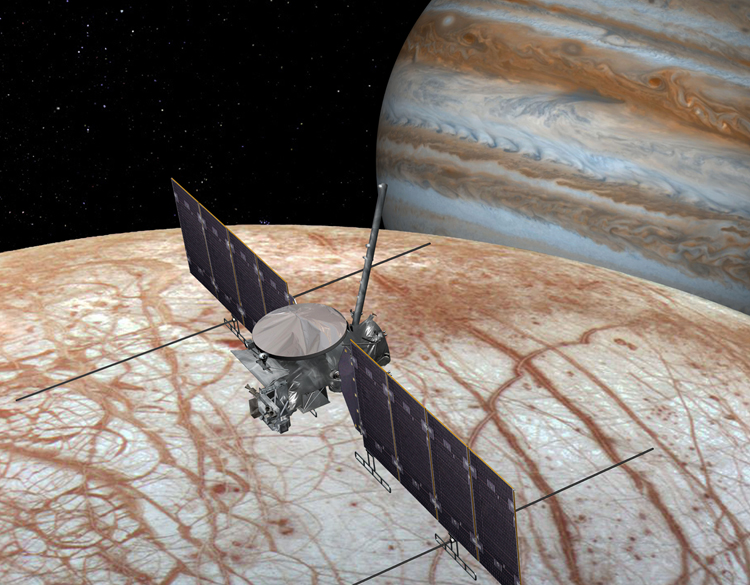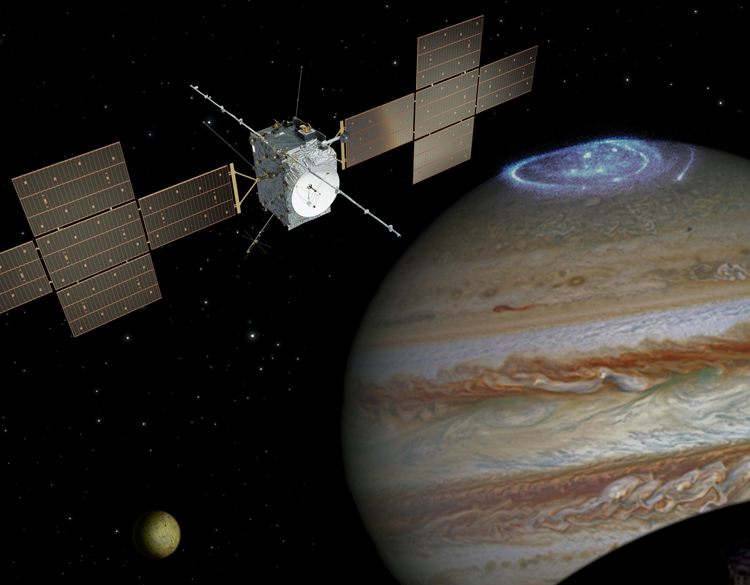Solar System Exploration Program
The Solar System Exploration Program consists of large, strategic missions that seek to advance high priority science objectives set forth by the planetary science community. Because of their complexity, NASA typically assigns these efforts directly to a NASA center or other implementing organization. Missions within the program investigate a synergistic array of science objectives with more depth and breadth than is possible for smaller, tightly focused missions in the Discovery and New Frontiers programs.
The following are missions that have been selected under the Solar System Exploration Program.
DART | Europa Clipper | JUICE
DART
The Double Asteroid Redirection Test, or DART, was the first demonstration of the kinetic impact technique to change the motion of an asteroid in space. This was a science-driven test of one of the technologies for preventing the Earth impact of a hazardous asteroid, with the primary objective to demonstrate and measure the effects of a kinetic impact on a small asteroid. The target of the binary near-Earth asteroid Didymos was successfully rendezvoused in September of 2022.
DART was a simple, single-string spacecraft design and carried an instrument called DRACO, short for Didymos Reconnaissance and Asteroid Camera for OpNav. DRACO was a high-resolution imager for targeting and observation during the impact rendezvous.
Europa Clipper
NASA’s Europa Clipper will conduct detailed reconnaissance of Jupiter’s moon Europa and investigate whether the icy moon could harbor conditions suitable for life. The mission will place a spacecraft in orbit around Jupiter in order to perform a detailed investigation of Europa — a world that shows strong evidence for an ocean of liquid water beneath its icy crust and which could host conditions favorable for life. The mission will send a highly capable, radiation-tolerant spacecraft into a long, looping orbit around Jupiter to perform repeated close flybys of the icy moon.
To develop this mission in the most cost-effective fashion, NASA is targeting to have the Europa Clipper spacecraft complete and ready for launch as early as 2023. The agency baseline commitment, however, supports a launch readiness date by 2025. The journey to Jupiter will be 6.5 years.
JUICE
The Jupiter Icy Moons Explorer, or JUICE, will investigate the emergence of habitable worlds around gas giants. It is the first large-class mission in the European Space Agency’s Cosmic Vision 2015-2025 program, which focuses on learning what are the conditions for planet formation and the emergence of life.
JUICE will spend three years making detailed observations of the gas giant planet Jupiter and studying three of its largest moons–Ganymede, Callisto and Europa–in unprecedented detail. The moons are thought to harbor vast water oceans beneath their icy surfaces.
The spacecraft launched in April of 2023 and is expected to reach Jupiter in July of 2031. In December of 2034, the spacecraft will enter orbit around Ganymede.




























